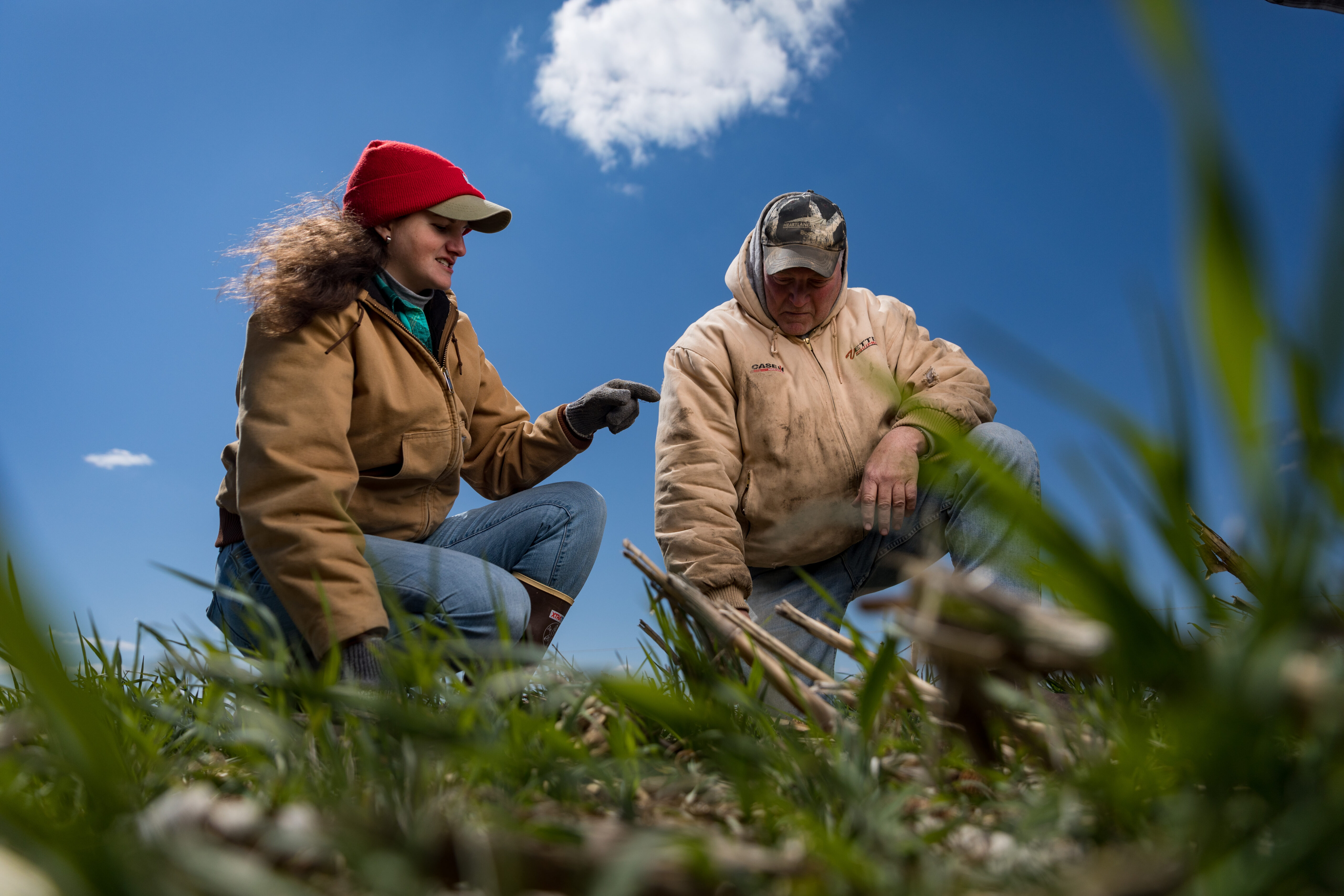On-farm Conservation Practices
Iowa’s water and soil are important, and Iowa Corn supports growers who are dedicated to implementing on-farm conservation practices to improve water and soil quality. But it’s not a one-size-fits-all solution. Because every farm is different with unique conditions like soil type, precipitation and management practices, each farmer has to manage the many variables on his or her respective farm.
Annual Practices
From cover crops to nutrient management, explore different conservation practices you can incorporate year to year.
Planting cover crops is a best management practice to improve water quality by retaining nutrients that may otherwise leave the field via erosion, runoff or leaching. Several years of agronomy research show there are many benefits of cover crops, too:
- Improves soil and water quality
- Reduces erosion
- Retains soil nutrients
- Sequesters carbon
- Breaks up soil compaction
- Replenishes nitrogen, reducing fertilizer costs
- Increases organic matter
- Combats weeds
Cover crops need to be planted early enough in late summer or fall to allow for germination and growth before frost (aerial seeding can help with this), and they need to be terminated in the spring to prevent interference with the next crop. However, this can easily be accomplished through grazing, haying, tilling, spraying or a combination of these methods.
No-till farming greatly reduces soil disturbance, which in turn reduces soil erosion, builds soil organic matter and helps reduce phosphorus entering waterways. Soil and crop residues are left undisturbed between harvest and planting, other than nutrient injection.
Strip-till is a modified form of conservation tillage where tillage is limited to a narrow zone in which the crop is planted. Soil disturbance is greatly reduced compared to conventional tillage. Strip-till reduces soil erosion, builds soil organic matter and helps reduce phosphorus leaving the field.
Extended crop rotation is a planting cycle of different crops such as grasses, legumes or small grains along with corn and soybeans to help improve soil health and decrease insect and disease pressure. The increased number of months that soil is covered with actively growing plants benefits water quality and soil health.
Nutrient management is an important consideration for every farm. The fertilizer rate, timing, placement and the source of nutrients applied are managed to maximize the nutrients taken up by the crop while minimizing the loss of nutrients – particularly nitrogen and phosphorus – to surface water, groundwater or to the atmosphere. The right source, rate, time and place make up the 4Rs of nutrient management.
Drainage water management or controlled drainage is the use of a control structure to manage drainage of water from fields throughout the year. The practice reduces the loss of nitrates and can increase crop yields in some years.
Long-term Practices
Farmers should also consider long-term conservation practices that protect water quality and soil health and can lead to other benefits, too.
Bioreactors redirect tile water to an underground bed of woodchips where nitrate is removed naturally by microorganisms. Bioreactors can reduce nitrates by an average of 43%. Vegetation on top of the bioreactor can provide other benefits, such as wildlife habitat.
Saturated buffers have a water level control structure that is installed near the outlet of a tile line, but within or immediately adjacent to an existing stream buffer. A portion of the water is diverted into a tile line parallel to the stream and within the buffer. Nitrates in the lateral tile are used by the vegetation around the buffer.
Strips of native prairie grasses and forbs are placed on the contour in crop fields, combined with filter strips of prairie grass strategically placed where runoff leaves the field. This practice results in large improvements in runoff water quality with only a small (10%) portion of the field taken out of row crop production.
Stream buffers are grassy or native vegetation adjacent to streams that trap sediment from surface runoff. They reduce phosphorus entering a waterway, filter nitrogen as it moves in groundwater through the soil, stabilize stream banks and provide habitat for wildlife.
Constructed wetlands are shallow vegetated pools that help filter nutrients, especially nitrates, control flooding and provide wildlife habitat. They have been shown to improve water quality by reducing nitrates by an average of 52%. Actual nitrate removal depends on rainfall, with greater removal in drier years and lesser removal in wetter years. Wetlands also provide habitat, recharge groundwater, reduce flooding downstream by storing runoff and can provide recreational opportunities.
Grassed waterways are areas within fields that are maintained in grass to address areas of concentrated water flow. Grassed waterways prevent soil erosion and associated phosphorus loss.
Terraces are earthen embankments, ridges or ridges-and-channel built across a slope to slow water runoff, thereby reducing soil erosion and phosphorus loss.
This practice is very similar to a terrace, but water and sediment control basins are generally short and straight, are placed at the lower end of slopes, and do little to reduce slope length. They may be used to help control gully erosion and/or to prevent sediment accumulations farther downstream.
